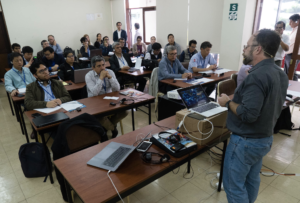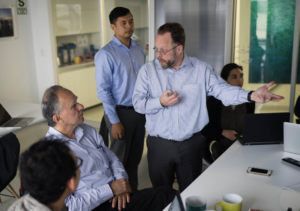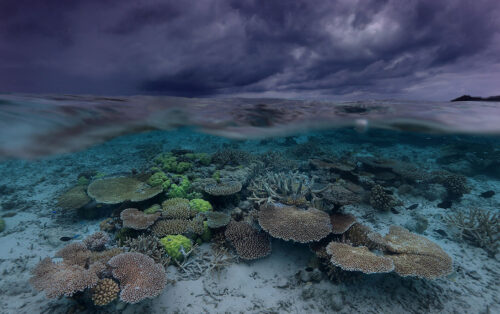Last week, members of our team traveled to Peru to participate in a workshop on fishing algorithms and data, co-hosted by Oceana Peru and the Instituto del Mar de Peru (IMARPE). We made the journey because Peru is releasing its fishing vessel data to the world – the Peruvian Vice Minister of Fisheries, Hector Soldi, has pledged to publish Peruvian Vessel Monitoring System (VMS) data through Global Fishing Watch. Releasing this data is a huge step forward for transparency in the fishing industry, and Peru will be the second country to make this data public. Peru is following the lead of Indonesia, which, under the direction of Minister of Marine Affairs and Fisheries Susi Pudjiastuti, published their VMS data in Global Fishing Watch earlier this year. Before Peru’s data can be released, though, we must first adapt our fishing activity algorithms to the particulars of Peruvian fisheries and coordinate with Peruvian government officials and researchers who are familiar with the data. So we traveled to Lima to meet and work with local experts.
 Workshop attendees included members from several Peruvian government groups including IMARPE, Monitoreo Satelital de Embaraciones (SISESAT), and the Ministry of Production (PRODUCE). Industry members Tasa and Austral Group – the only two companies in Peru to mandate AIS on their vessels – were also present. Finally, staff from Global Fishing Watch and our partners Skytruth, Oceana, and Google, as well as several Peruvian fisheries academics, attended. All groups shared their previous experience working with Peruvian VMS data, offering insights into how we can adapt our algorithms.
Workshop attendees included members from several Peruvian government groups including IMARPE, Monitoreo Satelital de Embaraciones (SISESAT), and the Ministry of Production (PRODUCE). Industry members Tasa and Austral Group – the only two companies in Peru to mandate AIS on their vessels – were also present. Finally, staff from Global Fishing Watch and our partners Skytruth, Oceana, and Google, as well as several Peruvian fisheries academics, attended. All groups shared their previous experience working with Peruvian VMS data, offering insights into how we can adapt our algorithms.
We also discussed ways we can collaborate with the Ministry to answer research questions with their VMS data, including estimated behavior during gaps in AIS transmission, environmental drivers of where fishing is occurring, improved understanding of unique fisheries, and identifying transshipments and other “events” in the data. Additionally, we discussed transshipments in Peru and ideas to track artisanal fisheries.
 We were struck by how many different groups were interested in fisheries transparency. Not only were government officials and NGOs enthused about sharing data, but the main industry groups also met with us and expressed support for our project in Peru. Peru has one of the world’s most productive fisheries, and it appears that many of key players in the country believe that transparency is a way to maintain the health of this important part of the Peruvian economy.
We were struck by how many different groups were interested in fisheries transparency. Not only were government officials and NGOs enthused about sharing data, but the main industry groups also met with us and expressed support for our project in Peru. Peru has one of the world’s most productive fisheries, and it appears that many of key players in the country believe that transparency is a way to maintain the health of this important part of the Peruvian economy.
Following the workshop, we look forward to working with the Ministry of Production to make Peruvian VMS data public in the coming months. We are excited for our collaborations with government and researchers in Peru to improve our understanding of the data and contribute to improving the sustainability of fisheries in Peru.


